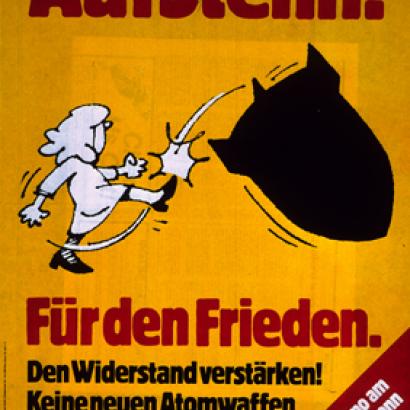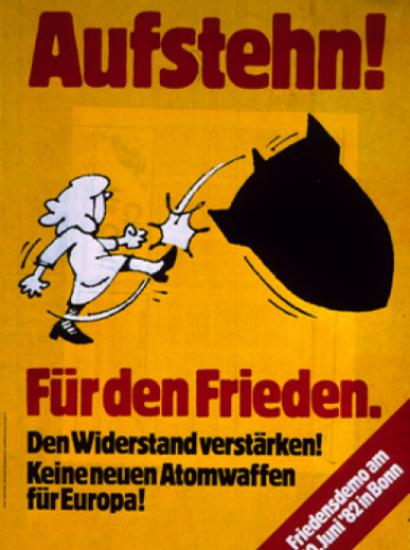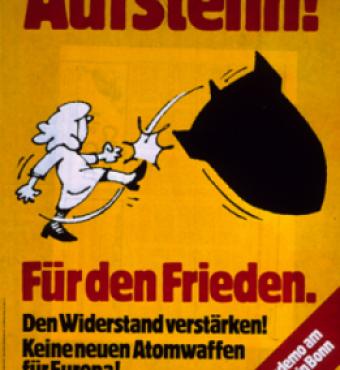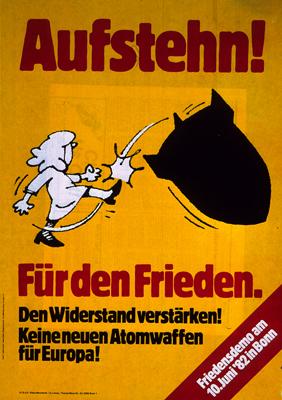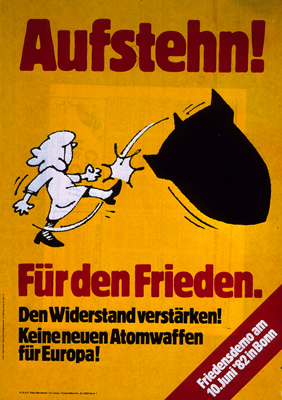
Those who used to worry endlessly about the “N + 1” problem—rampant proliferation—in the Sixties would be quite surprised some fifty years later. As the consensus of the strategic community had it at the time, there were some twenty countries with the industrial base capable of building nuclear weapons—and would do so in short order.
First surprise: The pace of proliferation actually has been quite slow. Counting eight declared nuclear powers and one undeclared (Israel), the average acquisition rate since 1945 was one every eight years. Just as surprising is the number of “deproliferators.” These were West Germany, Sweden, Japan, Argentina, Brazil, and Taiwan—nations developing a technological option and stopping along the road. South Africa gave up a small number of nuclear weapons. Libya and Iraq were forced to dismantle their capabilities. So it is actually “N – 9”—a far cry from the “N + 1” alarum.
Germany belongs to the first group: nations not going for nuclear weapons as such, but for the industrial-scientific wherewithal that dovetailed neatly with the enthusiasm for nuclear energy in those days. Bonn had renounced nuclear weapons as a price for joining the Western alliance in 1954, and it did so again, when it signed the NPT in 1968. And yet all the accouterments (minus weaponization) remained in place into the Nineties.
Nor were these just props, but integral to Germany’s civilian program. In addition, the Federal Republic sought “export primacy,” that is, a top global position in the nuclear-sales business. It was to be, so to speak, “one-stop shopping:” power reactors, plutonium reprocessing, fabrication, and ultimately, “fast breeders.” Whether there was a hidden weapons agenda, the record does not yet reveal, though certain politicos like Bavaria’s strongman Franz Josef Strauss must have been thinking of assembling the wherewithal for a nuclear option.
At any rate, German nuclear policy put Bonn on a direct collision course with the Carter administration. Washington pushed hard for a proliferation-proof energy regime, seeking to eliminate reactors fueled by highly-enriched uranium, reprocessed plutonium, and fast breeders. The Helmut Schmidt government pushed back just as hard, insisting on a complete fuel cycle: uranium conversion, fuel-element fabrication, heavy-water reactors (a more efficient plutonium producer than the light-water type), reprocessing, and fast-breeders (an even better source of plutonium).
Schmidt prevailed, and these components stayed in place way beyond the NPT. Now the 180-degreee turn. By the end of the Nineties, all the critical items were gone—closed or dismantled. By 2022, it will be curtains for nuclear energy, robbing Germany of any nuclear option whatsoever. Germany will not go nuclear because it couldn’t—at least for a generation.
Are there general lessons? For those, we must go back to the pivotal years of 1954 and 1968, when overwhelming political interests dictated renunciation. Without a vow of abstinence, Bonn would not have gained entry into the Western alliance. Reaffirming the pledge in the NPT of 1968 was the sine qua non of Ostpolitik, otherwise no détente and rapprochement with the Soviet bloc. In this respect, Germany was not a singular case in the world. The precedence of the political over the strategic also explains the case of Japan, South Korea, and Taiwan which would have faced a net loss in security by going nuclear, reaping the unforgiving hostility of their Asian neighbors and of China, above all.
In all other respects, the German story does not hold a general lesson. The causes of deproliferation were not political, as in the Asian cases, but cultural and psychological, and they are sui generis. Alone among the nations, Germany has developed a cast-in-concrete aversion to all things nuclear, even against nuclear power, which, to repeat, will be phased out completely by 2022. This revulsion would be easier to fathom in the case of Japan, history’s only victim of nuclear devastation. Yet even after Fukushima, Japan is holding on to nuclear energy.
Germany has suffered no such catastrophe. What’s more, German industrial prowess had turned to nuclear power in the Fifties with a vengeance, and the enthusiasm remained unbroken into the Eighties, with Germany eager to become the world’s premier exporter of nuclear technology. Yet that is the snow of yesteryear, which has been replaced by an anti-nuclear mindset uniting left and right. The cultural transformation is complete. Now, the anti-nuclear faith is practically an ersatz religion. To explain this psycho-cultural reversal is beyond the ken of strategic analysis, save to re-affirm that the German case does not yield much insight into the future course of other advanced nations.
Suffice it to say that whatever nuclear dreams West Germany might have had in the distant past, the nuclear option is gone—no more reprocessing, no more fast breeders. Might the quest be revived in the 21st century as the U.S. security guarantee to Europe is waning? (300,000 U.S. troops have dwindled into 30,000.) Elsewhere, particularly in the Middle East, America’s retraction and its turn toward Iran, leaving Tehran’s nuclear program intact, have set up incentives for competitive proliferation. But it defies the imagination to come up with a scenario that would reverse Germany’s transformation. Russia reconquering its Near Abroad? The United States cowering behind the walls of “Fortress America?” To go down this road is the stuff of thrillers, not analysis.







